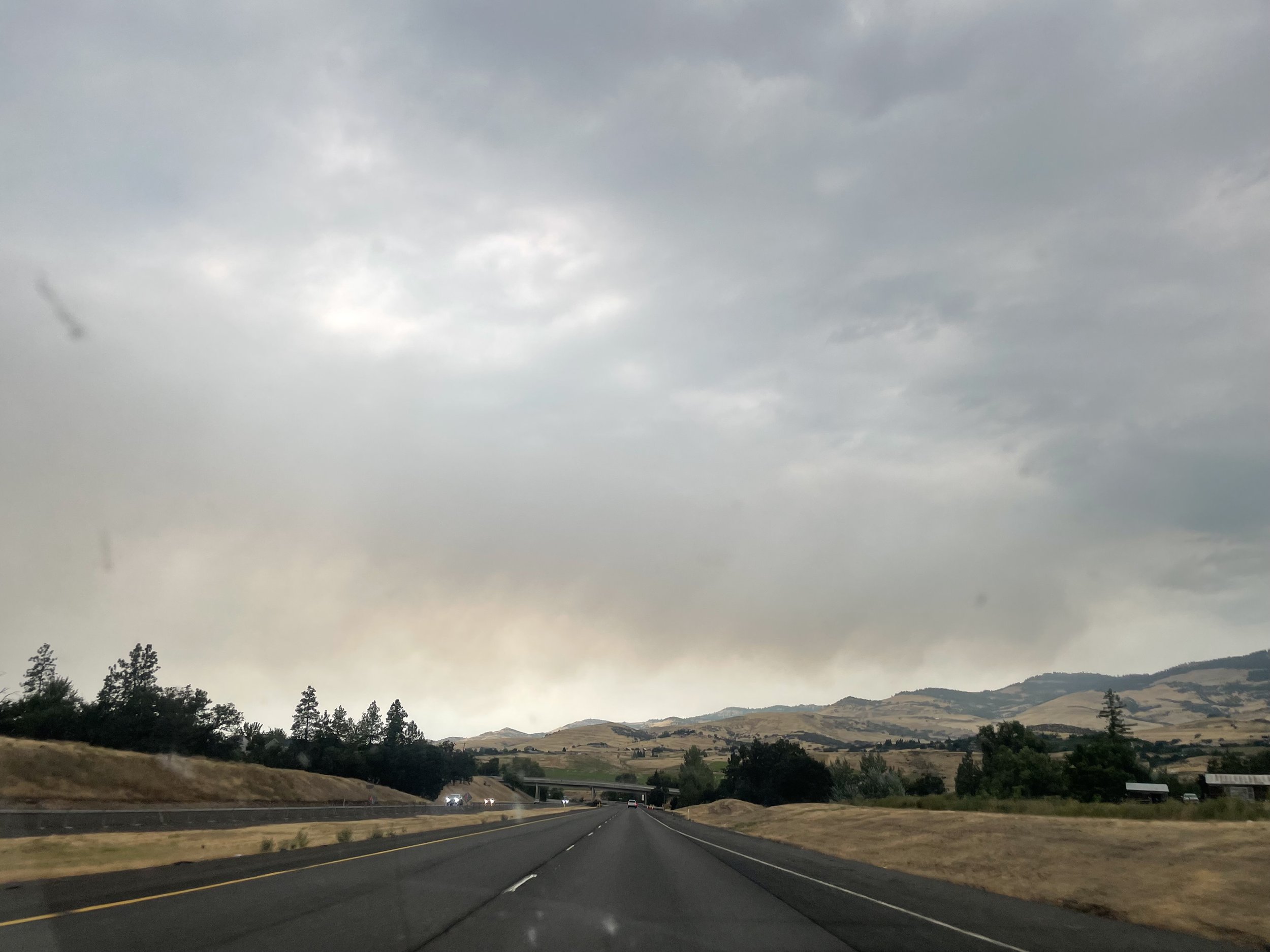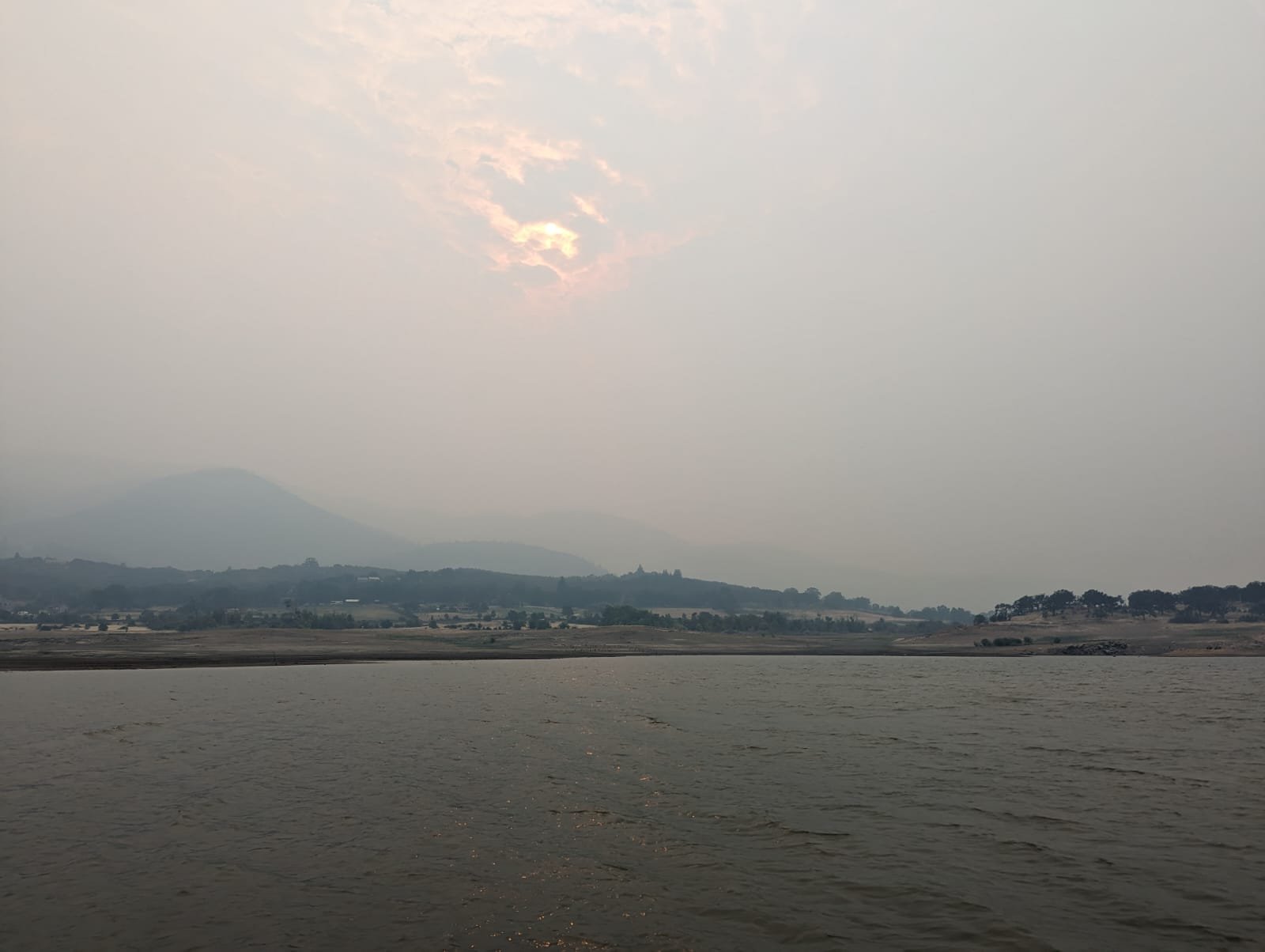Living with Wildfire Smoke
Written by Joseph Vaile on August 22, 2023
2023 wildfire smoke over Ashland, OR. Photo: Haleigh Martin
With the increase of frequency and severity of wildfire across the West and other nearby places, smoke is becoming a regular part of late-summer life in the Klamath-Siskiyou region. Whether it’s a fire burning in the region or smoke being pushed into the valleys from faraway fires, living with smoke is a skill that many people in the West and across the world are having to come to terms with. Thankfully, there are steps you can take to protect yourself and your loved ones from the repercussions of smoke.
Smoke is a mixture of fine particles and gasses, can be unhealthy to breathe, and is especially dangerous for children, the elderly, pregnant women, and people with heart or respiratory conditions. Sensitive groups are advised to limit outdoor activities, especially when the Air Quality Index (AQI) reaches levels considered ‘Unhealthy for Sensitive Groups’ or above.
How Do I Protect Myself During Smoke Season?
Limit your exposure to smoke. Learn more here.
Pay attention to local AQI reports: Visit AirNow.gov to see your zip code’s AQI.
Track the smoke forecasts to better understand what’s coming.
Avoid anything that increases indoor pollution like candles or vacuuming.
Close windows and doors.
Consider purchasing a standalone, High Efficiency Particulate Air (HEPA) grade indoor air purifier. Use this in a room where you spend most of your time. You can always move it from a bedroom at night to a living space during the day.
You can build your own low-cost box fan filter using high efficiency filters. A popular model is called the “Corsi-Rosenthal Box”.
If you have one, run an air conditioner. Keep any fresh-air intake closed (many systems do not have one) and the filter clean. Consult a local heating and air conditioning company to see if your system can handle a high efficiency filter. Air purifiers and filters can be purchased at your local hardware store or online.
Wear an N95 or N100 face mask. Fine particles, not hazardous gasses, can be filtered with these masks. Ensure a tight fit and check how long your mask is effective. Avoid smoke exposure during outdoor recreation. Before you travel to a park or forest, check to see if any wildfires are happening or if any prescribed burns are planned.
2023 wildfire smoke over Emigrant Lake in Ashland, OR. Photo: Haleigh Martin
Smoke Exposure
Prolonged exposure to smoke can be harmful to people of all ages, depending on the AQI reading. Symptoms of smoke exposure usually include:
Irritation of eyes, nose, and throat, or breathing discomfort. More severe symptoms may include chest tightness, wheezing, shortness of breath, and coughing.
Anyone experiencing symptoms should contact their healthcare provider for further advice or call 911 if warranted.
Where to find up-to-date wildfire information?
Visit our Wildfire Dashboard for information that is updated in real-time regarding AQI reports, wildfire updates, fire potential, and more.
Learn more about how you can prepare for wildfire.
Download your copy of the Forest & Fire Toolkit today.




